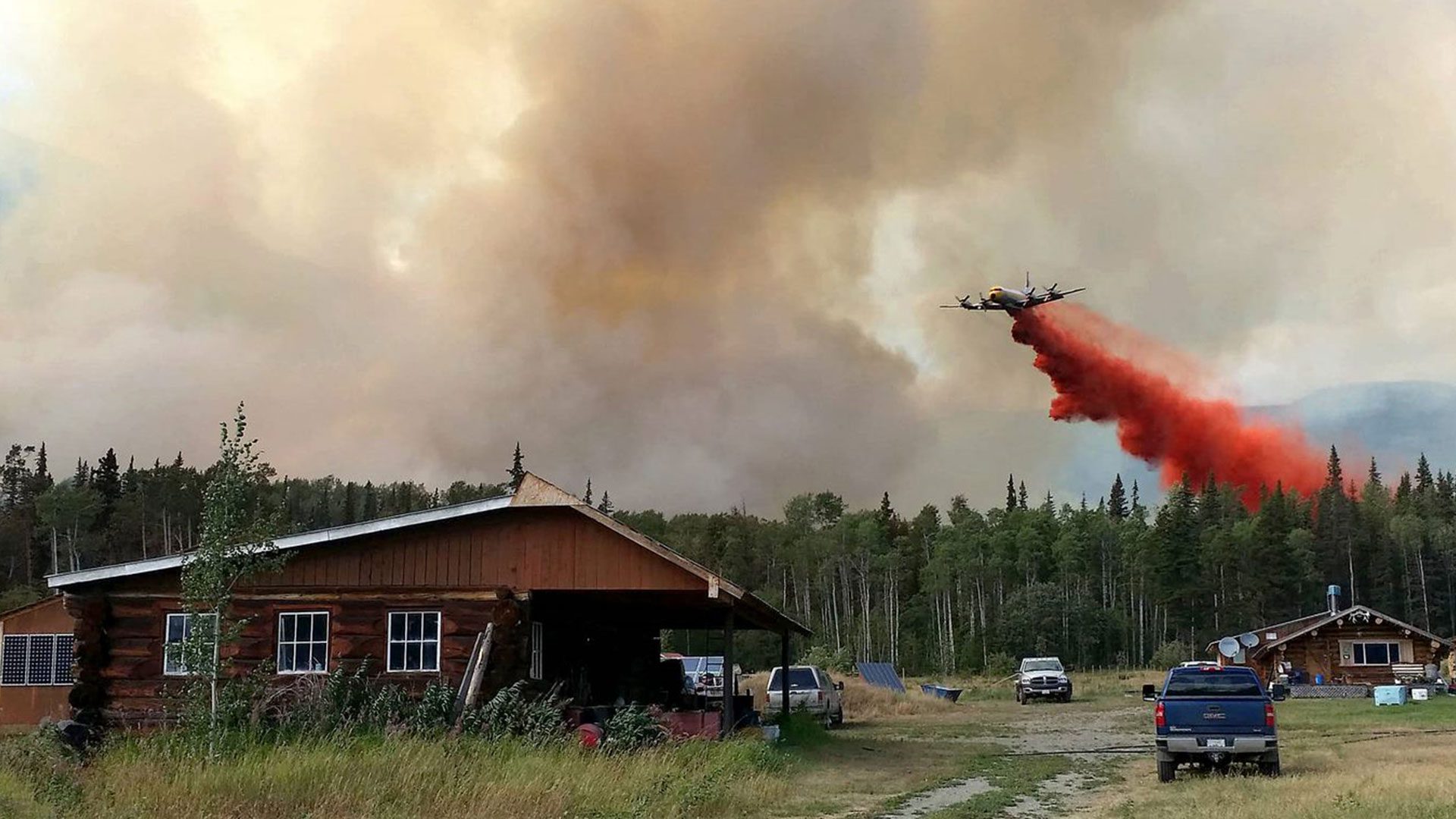
Telegraph Lake Fire from 2019. Photo: Tahltan central government
As a heavy wildfire season continues, communities are still struggling to recover from the previous year’s wildfires.
It’s making for an especially stressful situation.
According to Indigenous Services Canada, Ulkatcho First Nation has raised concerns over food security as their ability to hunt, fish and gather continues to be affected by wildfire. “The Nation is monitoring the protection equipment to ensure the safety of community members,” said the ISC update.
Glen Vowell, a community of Gitxsan people in the Hazelton area of northwestern B.C., is working on installing air cleaning equipment in the area.
The wildfire near Aq’am Nation is forcing the community to evacuate 35 additional houses to College of the Rockies.
And the Nuxalk Nation, on the central coast of B.C., is stocked up on fuel and food after road closures made evacuation impossible, but the threat of wildfire near their community has passed.
Read More:
Seven homes claimed by out of control wildfire in B.C.
Three of B.C.’s 21 wildfires of note, which are blazes that are highly visible or potentially damaging, are located in the southeastern part of the province.
Near Kamloops, crews continue to battle the Ross Moore Lake wildfire that triggered the evacuation of nearly 350 properties as strong winds fed its rapid growth over the weekend.
And the Telegraph Creek fire, more than 1,500 km from Kamloops, is still being restored after a devastating fire.
The Tahltan central government in northern B.C. is concerned about the fire damage in its territory, which runs adjacent to the Alaska border and stretches into the Yukon.
“Despite significant efforts, the lack of robust commitments provincially to ecological restoration initiatives has hindered the ability to progressively reclaim fire damaged areas,” Lands Director Connor Pritty told APTN News.

Fish passages for salmon, as well as the pace and scale of resource extraction in the area, leaves the community concerned about its sustainability in the future, added Pritty.
Recent heavy rain and the efforts of firefighters have helped reduce the number of active fires to 410 from 480. There are still 226 fires considered out of control.
The B.C. Wildfires Service says human activity has caused approximately 40 per cent of wildfires while lightning sparked more than 60 per cent.
Further south, the St. Mary’s River fire north of Cranbrook has burned close to 41 square kilometres and forced residents in 51 homes to evacuate. An evacuation order of 16 homes in Aq’am First Nation has been rescinded.
Provincial fire information officer Mike McCulley said Wednesday the service was grateful for rain in the north that allowed for “a small piece of reprieve.”

He told The Canadian Press: “It really helps us to get a handle on the fires and make some good progress. We’ve adjusted our tactics accordingly to try to take advantage of this window.”
The service is reporting just 10 new fires in the last 24 hours amid the easing conditions.
However, McCulley predicted this will be short-lived.
“We will be back into some very intense and dire wildfire conditions and extreme fire behaviour in the southeast part of the province, “ he said, “especially as they received virtually no precipitation through the last few days.”
The service’s website shows small pockets of extreme wildfire risk, mainly in the southeast.










